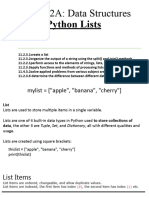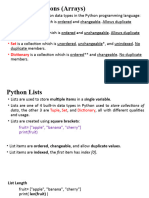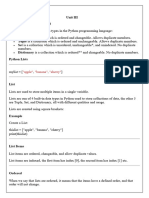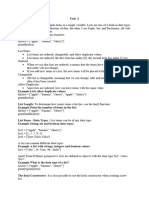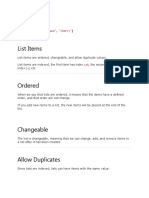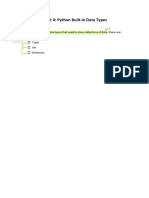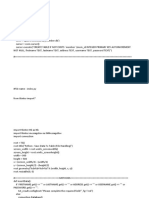0% found this document useful (0 votes)
34 views6 pagesList and Tuple Notes
The document provides an overview of lists and tuples in Python, explaining their characteristics, methods, and how to manipulate them. Lists are ordered, changeable, and allow duplicate values, while tuples are ordered but unchangeable. Various methods for adding, removing, and modifying items in both data structures are also described.
Uploaded by
sree priya palleCopyright
© © All Rights Reserved
We take content rights seriously. If you suspect this is your content, claim it here.
Available Formats
Download as DOCX, PDF, TXT or read online on Scribd
0% found this document useful (0 votes)
34 views6 pagesList and Tuple Notes
The document provides an overview of lists and tuples in Python, explaining their characteristics, methods, and how to manipulate them. Lists are ordered, changeable, and allow duplicate values, while tuples are ordered but unchangeable. Various methods for adding, removing, and modifying items in both data structures are also described.
Uploaded by
sree priya palleCopyright
© © All Rights Reserved
We take content rights seriously. If you suspect this is your content, claim it here.
Available Formats
Download as DOCX, PDF, TXT or read online on Scribd
/ 6
